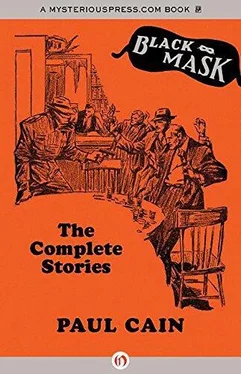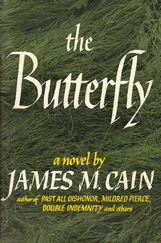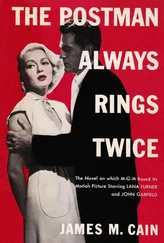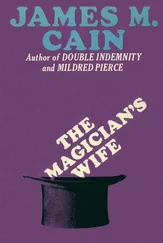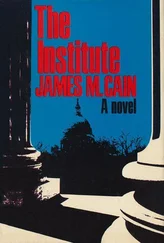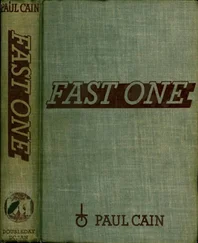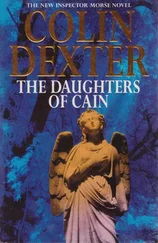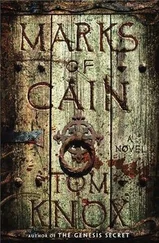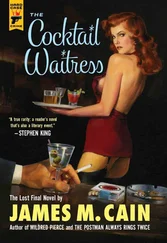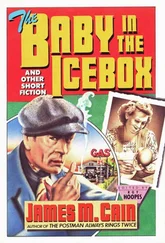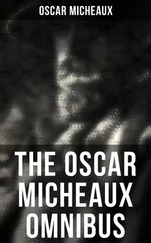Elliot Paul is indeed an awfully astute comparison. Born in 1891 — just over a decade before Sims — Paul was an experimental novelist in the early ’20s, an émigré in Gertrude Stein’s Parisian circle and a co-editor of transition in the middle of that decade, a “missing person” on a Spanish isle in the early ’30s, and a Hollywood screenwriter in the ’40s. Snatches of his biography correspond so perfectly to the facts and fictions of Sims’s own story that one is justified in asking whether the latter modeled himself on the former. Elliot Paul’s name even forms a Venn diagram with Paul Cain’s, and the titles of his first three novels — Indelible (1922), Impromptu (1923), and Imperturbe (1924) — sound like prequels to Syncopean . The situation, of course, is more complicated; Elliot Paul may not have served as a direct role model, but he did represent the society to which Sims had always wished to belong. Ironically, while Sims continued to place stock in spurious avant-garde credentials, Paul was turning to crime fiction. His The Mysterious Mickey Finn: Or, Murder at the Café du Dôme (1939) inaugurated a series of parodic detective novels starring Homer Evans, an American expatriate in Paris. In more ways than one, Sims and the smart set were ships in the night.
On July 25, Lewis describes a night in the life of Hollywood “players”: “last evening, going again to PR [Players Restaurant] with Peter Ruric and a couple of gals (each of whom was preposterously more beautiful, intelligent, and adorable than any NY girl, such as this Rosemary Povah).” But by August 10, Lewis had tired of the Ruric mystique: “Dinner last night, the only one attempted in my tiny dining-room where houseman here serves [me] breakfasts: Cedric [Hardwicke], who was charming as ever, Alex Knox (Jason) who was fair, Peter Ruric who was dreary...” It appears that many in Hollywood were beginning to feel the same way.
Cain, for his part, had a small resurgence. In 1944 Sims took a trip to New York, renting an apartment at 3 E 33rd Street and meeting with Shaw. After his return to Hollywood, Sims’s erstwhile mentor helped resuscitate his nose-diving protégé’s career, including “Red 71” in The Hard-Boiled Omnibus (1946). Shaw’s correspondence with Sims, who was living in a two-bedroom home at 2372 Loma Vista Place, involved more obfuscation and outright malarkey. Meanwhile, the Shaw Press in Hollywood (a subsidiary of Saint Enterprises) reprinted Fast One in 1944, followed by Sims’s own compilation of his finest Black Mask tales, Seven Slayers (1946). Avon would keep both volumes in print into the ’50s.
By that time, Ruric was entirely on the outs with the studios. His last screenplay had been a collaborative adaptation of two Maupassant stories, Mademoiselle Fifi (1944), and in 1948 he received a credit for the appropriately named Alias a Gentleman , which was based on a story he had sold to M-G-M in 1941. As Myers and Collins disclose, 1948 also saw Ruric writing two episodes for the radio program Cavalcade of America , “Incident at Niagara” (September 27, 1948) and “Home to the Heritage” (October 11, 1948). They quote radio historian Martin Grams: “It is interesting to note that he co-wrote the scripts with Virginia Radcliffe, who herself was a free-lance writer and wrote numerous scripts for Cavalcade .” [16] Myers and Collins, 29–30.
This partnership is interesting indeed, and wasn’t limited to the airwaves. Sims and Radcliffe, who was born in Chicago in 1914, were married sometime in 1945 or ’46, and their union lasted until the end of the decade. Radcliffe, the second Virginia in Sims’s life, had previously been married to the prolific bit-player and sometime writer George M. Lynn; after divorcing Sims, she’d go on to marry William Hurst, becoming an outspoken conservationist and penning The Caribbean Heritage , an illustrated history of the islands, which was published shortly after her death in 1976.
Sometime during their marriage the couple lived in New York, and it was at this point that Sims’s old acquaintance from the Chateau Marmont, Sinclair Lewis, reappeared in his life. Lewis’s biographer Mark Schorer writes:
[Lewis] was spending as many hours as she would give him with Miss Powers, but there were empty stretches when he turned to people whom he hardly knew — the young Hollywood script-writer Peter Ruric, for example, who was now writing a novel in New York, and whom Lewis invited to his apartment with his fiancée, and to whom he said that he could not work in New York, that he was returning as soon as possible to his home ground. One afternoon he had this couple to a cocktail party with some other young people, including Miss Powers, and presently he sent the whole party out to dinner, promising to join them later. He made reservations for them at an 86th Street Brauhaus, to which they proceeded, and where they dined, danced and waited for him; but he never came. His guests spoke of him with faint scorn, a hopeless case, and Miss Powers, although defensive of him, despaired, too. [17] Mark Schorer, Sinclair Lewis: An American Life (New York: McGraw-Hill, 1961), 727. See also ibid., 707.
Lewis himself had grown dreary. Schorer seems to have learned of this meeting partly from Miss Powers, and partly from Virginia Radcliffe herself, whom he thanks in his acknowledgments.
Records from the U.S. Copyright Office also show that Sims had written plays as Ruric that were never published, registering Memory of Man, a Play. In Three Acts in 1947, and Count Bruga, a Morality Play in Three Acts in 1949. [18] Catalog of Copyright Entries. Third Series. Parts 3–4: Dramas and Works Prepared for Oral Delivery , vol. 1 (Washington, D.C.: U.S. Library of Congress, Copyright Office, 1947), 206; Catalog of Copyright Entries. Third Series. Part 2: Periodicals , vol. 3 (Washington, D.C.: Copyright Office, Library of Congress, 1949), 76.
The latter was based on Ben Hecht’s 1926 novel, a satire of Greenwich Village bohemia and its archetypal poète maudit , Maxwell Bodenheim.
In 1949, Marcel Duhamel, the legendary editor of Gallimard’s “Série noire,” added a French translation of Fast One to his catalog. Inclusion in this prestigious series — a favorite among French intellectuals — encouraged Sims. By this time, it must have been clear to him that the Paul Cain stories stood the best chance of gaining him entry into the world of the European avant-garde, to which he had long claimed allegiance. After all, even Gertrude Stein had lent the hard-boiled crime novel her imprimatur in Everybody’s Autobiography (1937): “I never try to guess who has done the crime and if I did I would be sure to guess wrong but I liked somebody being dead and how it moves along and Dashiell Hammett was all that and more.” [19] Gertrude Stein, Everybody’s Autobiography (New York: Random House, 1937), 4.
A year earlier, in her lecture “What Are Master-pieces and Why Are There So Few of Them” (1936), Stein had mused on the detective story’s peculiar merits: “It is very curious but the detective story which is you might say the only really modern novel form that has come into existence gets rid of human nature by having the man dead to begin with.” [20] Idem, “What Are Master-pieces and Why Are There So Few of Them,” in What are Masterpieces (Los Angeles, CA: The Conference Press, 1940), 87.
Stein valued style and pace, and Hammett had certainly provided, but it was Cain who would have best met her needs; no one in the hard-boiled school had so fearlessly elevated style and pace over moral substance and “human nature.” Indeed, no crime novel was more modernistic in a Steinian sense than Fast One , and Duhamel had given its author recognition when he needed it most.
Читать дальше
